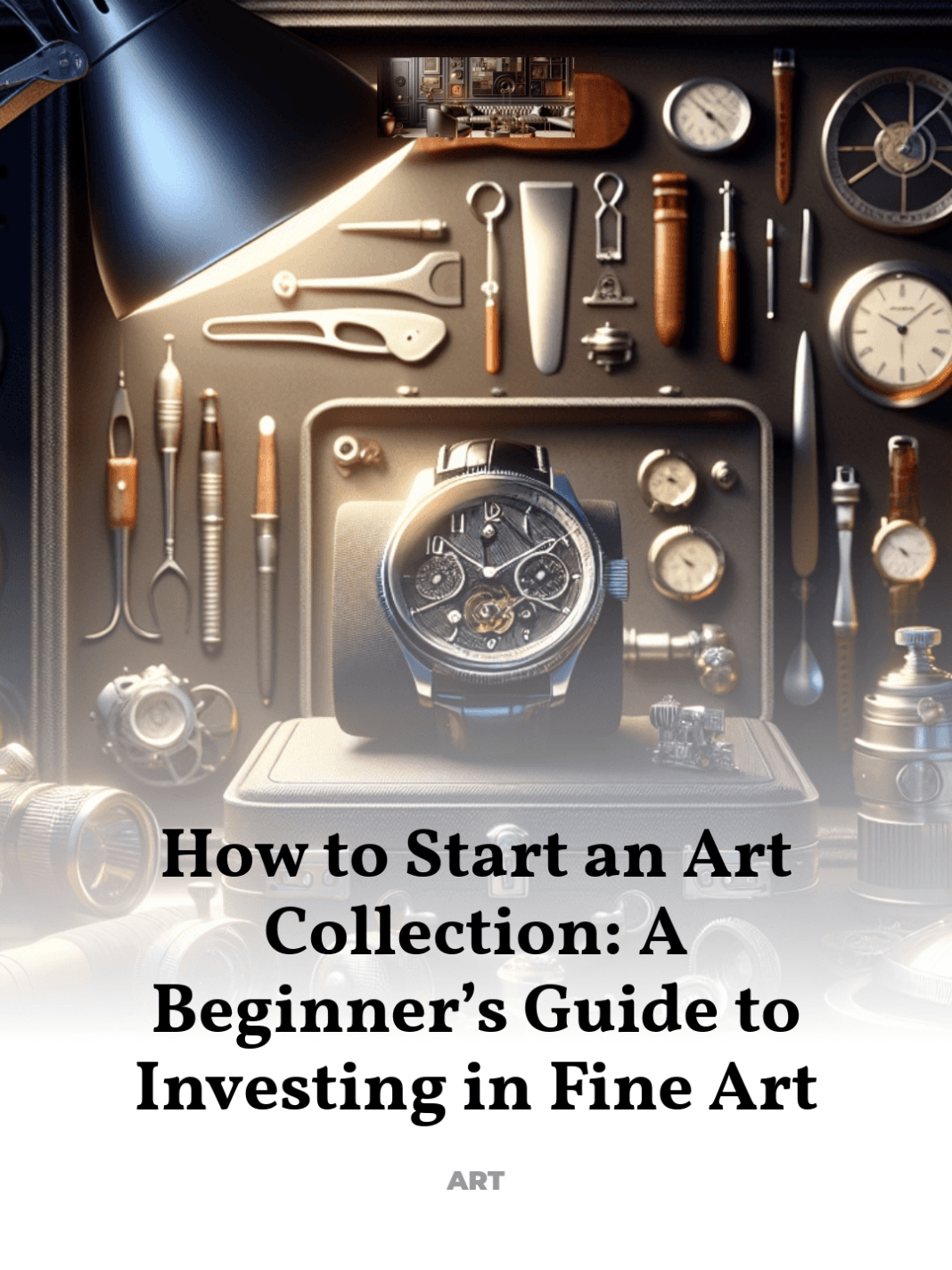The key steps to building a valuable and meaningful collection
Embarking on the journey of collecting fine art is not merely an acquisition of artworks but a pursuit of passion, culture, and personal expression.
- Understanding Art: Foundations and Appreciation
- Starting Your Collection: Practical Steps
- Choosing Artworks: What to Look For
- Managing Your Collection: Care and Curation
- Engaging with the Art Community
- The Future of Your Art Collection
Understanding Art: Foundations and Appreciation
Before diving into the world of art collection, it is essential to cultivate a deep understanding and appreciation of art. This involves exploring various art movements, understanding the historical context of different periods, and recognizing the techniques and materials used in artworks. Museums, art history books, and educational courses can provide invaluable insights into the world of art.
- Art Movements: Familiarize yourself with key art movements such as Renaissance, Impressionism, Modernism, and Contemporary art.
- Techniques and Materials: Learn about the different techniques artists use, whether it’s oil painting, sculpture, or digital art, and the materials involved in each.
- Historical Context: Understanding the time period and the socio-political environment in which an artwork was created can add layers of meaning to the piece.
Starting Your Collection: Practical Steps
Initiating an art collection requires thoughtful planning and a strategic approach. Start by defining your goals and preferences. Are you inclined towards a particular style or artist? What is the scale of the collection you envision? Answering these questions will help you refine your focus and make informed decisions.
- Define Your Budget: Establish a budget that will guide your purchases. Remember, collecting art is a long-term endeavor.
- Research Artists and Galleries: Invest time in researching artists and galleries. Attend gallery openings, art fairs, and exhibitions to discover artists whose works resonate with your aesthetic and philosophical inclinations.
- Consult with Art Advisors: Engaging with art advisors or consultants can provide professional guidance tailored to your personal interests and budgetary considerations.
Choosing Artworks: What to Look For
Selecting artworks is perhaps the most exhilarating part of building an art collection. Look for pieces that not only appeal to your aesthetic sense but also have a potential for cultural significance. Consider the artist’s background, the artwork’s provenance, and its condition.
- Artist’s Background: Understanding an artist’s journey, philosophy, and the trajectory of their career can provide deeper insights into their works.
- Provenance: The history of the artwork’s ownership can be fascinating and adds to the artwork’s narrative and authenticity.
- Condition: Assess the condition of the artwork to ensure its longevity and stability over time.
Managing Your Collection: Care and Curation
Maintaining and curating your collection is crucial for its preservation and enhancement. Proper care involves regular maintenance, appropriate display, and insurance. Curating your collection, whether for private enjoyment or public exhibition, involves thematic grouping and rotation to keep the collection dynamic.
- Conservation: Regular maintenance, including cleaning and controlling environmental conditions such as light, humidity, and temperature, is essential.
- Display: Displaying art involves considerations of spacing, lighting, and framing. Each piece should be showcased in a way that complements its beauty and significance.
- Insurance: Insuring your art collection will protect against potential loss or damage, providing financial security.
Engaging with the Art Community
Building relationships within the art community can enrich your collecting experience. This includes interactions with artists, curators, fellow collectors, and art critics. Participating in art talks, workshops, and community events can provide deeper immersion into the art world.
- Networking: Attend art-related events and join art clubs or societies to meet like-minded individuals and industry professionals.
- Support Emerging Artists: Consider supporting emerging artists whose work you admire. This not only helps the artists but can also add unique and valuable pieces to your collection.
- Philanthropy: Engage in philanthropic activities such as donating to art museums or sponsoring art shows, which can also enhance your reputation as a serious collector.
The Future of Your Art Collection
As your collection matures, consider its future. This might involve planning for its long-term care, thinking about passing it on to heirs, or donating pieces to institutions. Your collection could serve as a legacy that reflects your personal taste and passion for art.
- Legacy Planning: Consider how you want your collection to be handled in the future. This might involve setting up a private foundation or donating to museums.
- Documentation: Keeping detailed records of your collection’s artworks, including their provenance, value, and insurance details, is crucial for effective management and future planning.
- Exhibitions: Organizing private or public exhibitions can enhance the visibility of your collection and contribute to the cultural landscape.
Starting an art collection is a journey of passion, learning, and engagement with the art world. It requires a blend of aesthetic judgment, practical considerations, and a deep appreciation of art’s cultural and historical dimensions. By following these guidelines, you can build a collection that is not only valuable but also deeply meaningful.
For further exploration into the world of fine art collecting, consider visiting authoritative sources such as The Metropolitan Museum of Art’s website.



